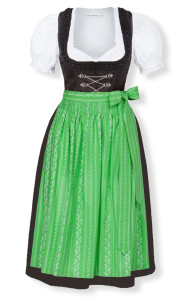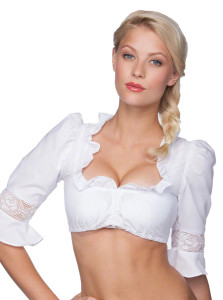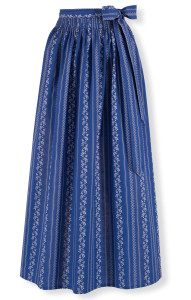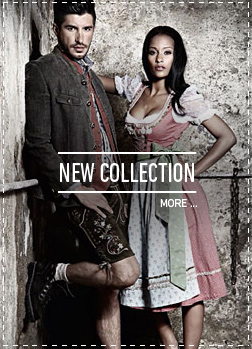Posted by trachten in Dirndl and Lederhosen | Comments Off on The Anatomy of the Dirndl
The Anatomy of the Dirndl
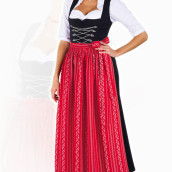
None of us would buy a dirndl simply to wear it. Obviously, putting it on is the main purpose: but you can put on a pair of jeans or a dress. No, a dirndl is there to make us be seen; it’s also there to make us part of a group, show respect for tradition, or because we like the look of it. Above all, then, it is there to be commented on and talked about. If you’ve spent hours thinking about which one to buy – or if you’ve spent days making your own – then you’re going to want to talk about it to other people interested in Bavarian fashion.
And to make sure you can do just that without sounding like a no-nothing, here’s our quick run-down on the basic anatomy of a dirndl. What are the various bits of it called – both in English and in German? From now on, we’re no longer talking about “this part” and “that bit”: let’s get specific.
Let’s get started with the basics: a dirndl is in fact made up of three distinct pieces: the dress, the blouse, and the apron. In Bavarian dialect, a Diandl is in fact primarily a word for a girl or woman, and you need to add the word Gwand, or “costume”, for it to be clearly about the traditional Bavarian dress.
Quick German translation: dress – Kleid, blouse – Bluse, apron – Schürze.
The dress
The dirndl dress is made up of two pieces: the skirt and the bodice. The bodice is adorned with what is known as cosetry: these are the hooks or eyelets through which the chain is threaded. Running down beside the hooks, up around the cleavage and to the top of the neckline, you’ll generally find trim – either in the form of braid, frills, or ruffles – and sometimes piping (no, that’s not your sink: that’s the thin strips sewn over the edges of a piece of fabric). Not only do these details enhance and protect the fabric, but they also draw the eye to that key part of the female anatomy: cleavage.
Which is where the blouse comes in. Featuring either a sweetheart (i.e. v-shaped) or a square cut neckline, blouses either come with full sleeves or are to be worn off the shoulders, which is referred to as Carmen style. All dirndl blouses are cropped just below the bust, which means that most of the design effort goes into the edging around the neckline and the sleeves – which generally tend to be puffed, by the way. The sleeves are pulled in – “gathered” in tailor’s talk – and trimmed at the bottom, usually with lace or light frills and ruffles. Around the neckline, “broderie” – a form of embroidery – is a popular trimming.
Now we’re getting onto vocab that only your grandmother will know: after all, aprons and pinnies are no longer standard features of our wardrobes today. Essentially, an apron should always stop a few inches above the hem of the skirt, so in terms of length its anatomy is very much defined by the dirndl dress you have on. The important feature of every apron is the waist: it should have a long ribbon – or sash – to allow fastening in various ways and a broad smock just below that. Smock? Yes, that’s an embroidery technique by which fabric is gathered into folds so that it can stretch and contract. This keeps it stable on the waist without cutting into it.
So now that we know our dirndls so much better, we can start making compliments that really mean something without fear of misunderstanding: nice broderie! Lovely sash! Hot smock!
And if you fancy a look at some really great dirndls – described in loving detail – then stop by here.

